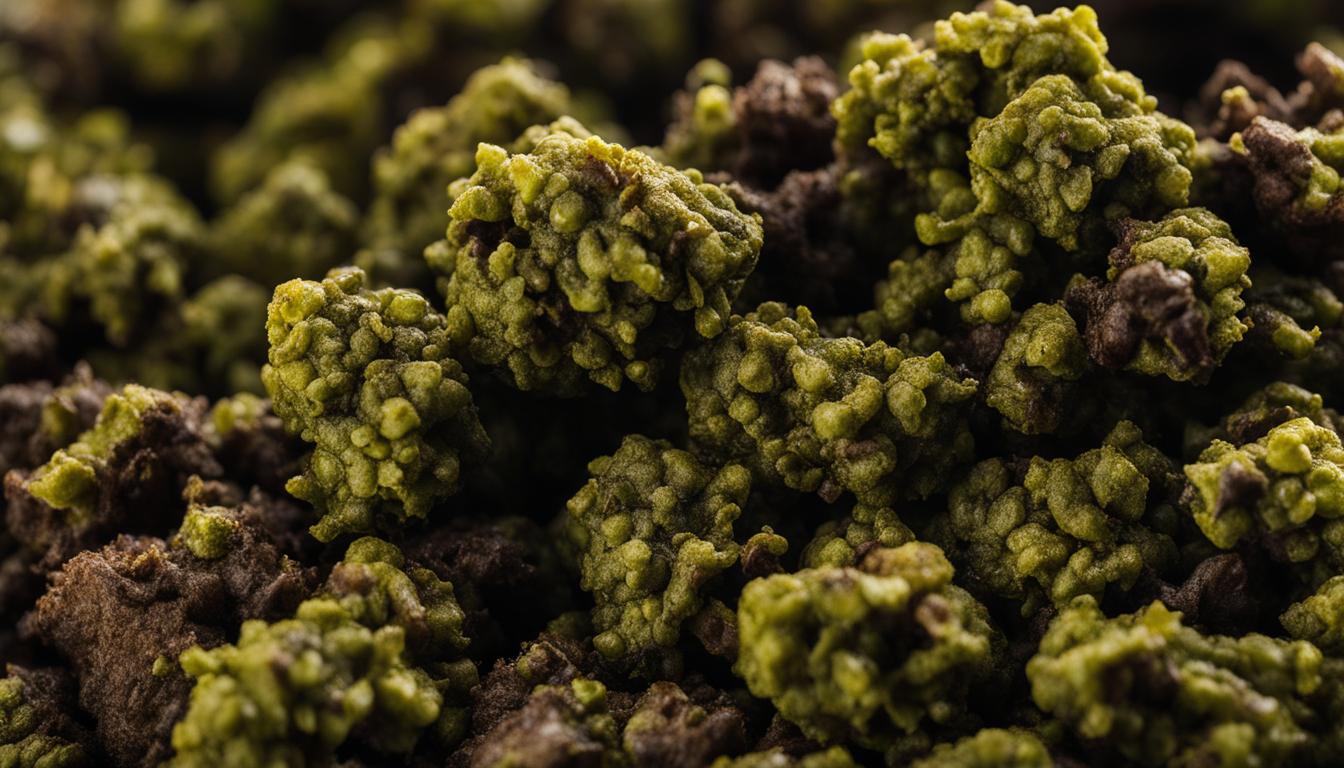Cat Allergy Shots Overview
For individuals who suffer from cat allergies, finding relief can be a challenge. However, cat allergy shots, also known as immunotherapy, offer a potential solution for reducing the severity of allergic reactions. Understanding cat allergies and how allergy shots work is crucial in exploring this treatment option.
Understanding Cat Allergies
Cat allergies are caused by proteins found in a cat’s saliva, urine, and dander, known as allergens. These allergens can trigger an overreaction in the immune system, leading to allergic reactions (Curex). Common symptoms of cat allergies include sneezing, nasal congestion, itchy and watery eyes, coughing, and wheezing.
It’s important to note that even hypoallergenic cats may still produce allergens, although at lower levels, and can still cause allergic reactions in sensitive individuals.
How Allergy Shots Work
Allergy shots for cat allergies are a form of immunotherapy. They work by gradually exposing the immune system to small, controlled amounts of cat allergens, typically proteins found in the cat’s skin, saliva, or urine. This exposure helps the immune system become less sensitive to cat allergens, reducing the severity of allergic reactions and symptoms over time (Curex).
The process of allergy shots involves a series of injections administered by a healthcare professional. The injections contain tiny amounts of allergens that alert the immune system without causing immediate allergic symptoms. The dose of allergens gradually increases over time, allowing the immune system to learn not to overreact to them. This leads to improvement in allergy symptoms.
It’s worth noting that allergy shots are typically given over a period of 3 to 5 years. During the first year of treatment, allergy symptoms often improve, with the most noticeable improvement occurring in the second year. By the third year, many individuals no longer experience severe reactions to cat allergens. While some people may not have allergy problems even after stopping allergy shots, others may require ongoing shots to control their symptoms (Mayo Clinic).
In the next sections, we’ll explore the effectiveness of cat allergy shots, the administration process, considerations, and precautions associated with this treatment, as well as long-term effects and maintenance. Stay tuned to learn more about this potential solution for cat allergy relief.
Effectiveness of Cat Allergy Shots
When it comes to managing cat allergies, cat allergy shots have shown promising results in providing relief to individuals who are allergic to cats. Let’s explore the effectiveness of these shots, including recent research on tezepelumab combination therapy and the lasting relief benefits it offers.
Research on Tezepelumab Combination Therapy
Recent research has focused on the combination therapy of cat allergy shots with tezepelumab, a monoclonal antibody. This combination has shown improved results in reducing peak nasal symptoms compared to allergy shots alone (NIH Research Matters). Participants who received tezepelumab plus cat allergy shots had significantly lower peak nasal symptoms compared to those receiving allergy shots alone by the end of the first year of treatment. This combination therapy proved to be more effective in alleviating symptoms associated with cat allergies.
Lasting Relief Benefits
The research also revealed that the combination therapy of tezepelumab plus cat allergy shots provides longer-lasting relief. Even after a year of treatment completion, the group receiving the combination therapy continued to experience reduced peak nasal symptoms, while the standard allergy shots lost their effectiveness (NIH Research Matters). This indicates the lasting protection offered by the combination therapy, which is a significant advantage for individuals seeking prolonged relief from cat allergies.
The findings of the study suggest that the inhibition of TSLP (thymic stromal lymphopoietin) through tezepelumab enhances the effectiveness of standard allergy shots for cat allergies. This combination therapy not only provides immediate relief but also offers lasting benefits, making it a promising option for individuals struggling with cat allergies.
It’s important to note that cat allergy shots, whether used alone or in combination with tezepelumab, may not eliminate all symptoms completely. However, they have been shown to significantly reduce the severity and frequency of allergic reactions, allowing individuals to better manage their cat allergies.
In the next section, we will explore the administration process and cost considerations associated with cat allergy shots.
Administration and Cost
When considering cat allergy shots as a treatment option for cat allergies, it’s important to understand the administration process and the associated costs.
Allergy Shot Process
Allergy shots for cat allergies typically involve two phases: the buildup phase and the maintenance phase. During the buildup phase, which lasts about 3-6 months, the dose of the allergen is gradually increased with each injection. This helps the immune system become less sensitive to cat allergens over time. The maintenance phase follows the buildup phase and usually takes about 6 months to reach the maintenance dose. Injections are given less frequently during the maintenance phase, typically once a month. The duration of the maintenance phase can vary from 3 to 5 years, depending on the individual’s response to treatment (Curex).
The administration of allergy shots is typically done in a healthcare provider’s office, and each injection is given into the fatty tissue just under the skin. The frequency of injections and the total duration of treatment will be determined by your healthcare provider based on your specific needs and response to the shots.
Cost Comparison: Shots vs. Drops
The cost of cat allergy shots can vary depending on various factors, including insurance coverage. On average, each visit for cat allergy shots can cost around $150, and the total cost can potentially reach thousands of dollars per year (Curex). It’s important to check with your insurance provider to understand your coverage and any potential out-of-pocket expenses.
In comparison, cat allergy drops may be a more cost-effective option for some individuals. However, the cost of cat allergy drops can also vary depending on the specific treatment plan and the duration of use. It’s advisable to consult with your healthcare provider and insurance company to determine the cost implications of both options and make an informed decision based on your individual circumstances.
Understanding the administration process and the associated costs of cat allergy shots can help you make an informed decision about the most appropriate treatment option for your cat allergies. It’s important to discuss your options with a healthcare professional who specializes in allergies to determine the best course of action for your specific needs. For information on other cat allergy treatments, you can visit our article on cat allergy treatment.
Considerations and Precautions
When considering cat allergy shots as a potential treatment option, it’s important to understand the criteria for candidacy and be aware of the associated risks and side effects.
Candidates for Allergy Shots
Allergy shots for cat allergies are most effective for individuals with a specific allergy to cat dander, rather than other allergens. They are recommended for people with moderate to severe cat allergies who wish to reduce their symptoms without giving up their cat. However, certain medical conditions may restrict eligibility for allergy shots, such as severe asthma, heart disease, or pregnancy.
Before starting allergy shots, it’s crucial to consult with an allergist to determine if you are an appropriate candidate for this form of treatment. Allergy testing may be conducted to confirm the presence of cat allergies and assess their severity. The allergist will consider your medical history and individual circumstances to determine the suitability of allergy shots for your cat allergy relief.
Risks and Side Effects
While allergy shots for cat allergies can be an effective treatment option, it’s important to be aware of the potential risks and side effects. Common side effects of allergy shots include redness, swelling, or itching at the injection site. These reactions are usually mild and resolve on their own.
In rare cases, more serious side effects can occur, such as difficulty breathing, chest tightness, or a rapid heartbeat. If you experience any of these severe reactions after receiving an allergy shot, it is essential to seek immediate medical attention.
Allergy shots should always be administered under the supervision of a healthcare professional in a controlled environment. They are typically initiated with a buildup phase, where the dose of the allergen is gradually increased over a period of 3-6 months. This is followed by a maintenance phase, where injections are given less frequently, typically once a month, for 3 to 5 years depending on the individual’s response to treatment (Curex).
It’s important to note that allergy shots may not work for everyone, and individual responses to treatment can vary. Regular follow-ups with your allergist are necessary to monitor your progress and adjust the treatment plan if needed.
Before starting allergy shots, it’s crucial to discuss any potential risks, side effects, and concerns with your allergist. They will provide you with comprehensive information and guidance to ensure that allergy shots are a suitable and safe option for managing your cat allergies.
In the next section, we will explore the long-term effects and maintenance of cat allergy shots, including the duration of treatment and strategies for managing symptoms.
Long-Term Effects and Maintenance
When considering cat allergy shots as a treatment option, it’s important to understand the long-term effects and the maintenance required to manage cat allergies effectively.
Duration of Treatment
Allergy shots, also known as immunotherapy, are a long-term treatment approach for cat allergies. The treatment typically lasts for 3 to 5 years, with two distinct phases: the buildup phase and the maintenance phase.
During the buildup phase, which usually lasts about 3 to 6 months, the dose of the allergen is gradually increased with each injection. This helps the immune system become less sensitive to the allergen over time. Once the maintenance dose is reached, the maintenance phase begins. This phase can last anywhere from 3 to 5 years, depending on the individual’s response to treatment.
In the maintenance phase, injections are given less frequently, typically once a month. The goal is to maintain the immunization achieved during the buildup phase and provide ongoing relief from cat allergy symptoms. It’s important to follow the recommended schedule and complete the full duration of treatment for optimal results.
Management of Symptoms
The primary purpose of cat allergy shots is to reduce and manage the symptoms triggered by cat allergens. During the course of treatment, most people experience a noticeable improvement in their allergy symptoms. According to Mayo Clinic, allergy symptoms typically improve during the first year of treatment, with the most noticeable improvement often occurring in the second year.
While allergies shots can be highly effective, it’s important to note that the treatment may not completely eliminate all symptoms for everyone. Some individuals may continue to experience mild symptoms, but these symptoms are typically less severe and easier to manage.
To effectively manage cat allergy symptoms during and after treatment, it’s recommended to take additional measures such as:
- Minimizing exposure to cat allergens by keeping cats out of specific areas of the home, using air purifiers, and regularly cleaning and vacuuming.
- Using cat allergy medication as prescribed by a healthcare professional to control symptoms.
- Considering hypoallergenic cats or other strategies to reduce allergen exposure.
It’s important to consult with an allergist or immunologist to develop a comprehensive management plan tailored to individual needs. They can provide guidance on the best strategies for managing cat allergies, both during and after the course of allergy shots.
Remember, cat allergy shots are not suitable for all individuals. They may not be available for food allergies or long-lasting cases of hives (urticaria) (Mayo Clinic). It’s essential to discuss eligibility and potential risks with a healthcare professional before starting any immunotherapy treatment.
By understanding the duration of treatment and implementing effective symptom management strategies, individuals can experience lasting relief from their cat allergies and improve their overall quality of life.
Future Research and Developments
While cat allergy shots have shown promise in providing relief for individuals with cat allergies, ongoing research and developments continue to advance the field of allergy immunotherapy. Two areas of focus include tezepelumab in food allergy treatment and advancements in allergy immunotherapy.
Tezepelumab in Food Allergy Treatment
Plans are underway to assess the effectiveness of tezepelumab, a monoclonal antibody, in combination with oral immunotherapy for the treatment of food allergies. This development holds potential for individuals who not only struggle with cat allergies but also face food allergies (NIH Research Matters). By expanding the application of tezepelumab, researchers aim to address the needs of individuals with multiple allergies, providing them with longer-lasting relief and improving their quality of life.
Advancements in Allergy Immunotherapy
The field of allergy immunotherapy continues to evolve, with ongoing efforts to develop regimens that are more effective and efficient than existing treatments. Researchers are working to create allergen immunotherapy protocols that provide more rapid and substantial symptom relief. This advancement is particularly significant for individuals with chronic allergy symptoms, as improved treatments would enhance productivity and overall well-being.
As research progresses, it is anticipated that the development of novel techniques and therapies will contribute to more targeted and personalized approaches in allergy immunotherapy. These advancements hold promise for individuals with cat allergies and other allergic conditions, providing hope for improved treatment options in the future.
It is important to stay informed about the latest developments in allergy immunotherapy as they may offer new solutions and alternatives to individuals with cat allergies. Consult with a qualified allergist or immunologist to discuss the most up-to-date treatment options that may be suitable for your specific needs.








